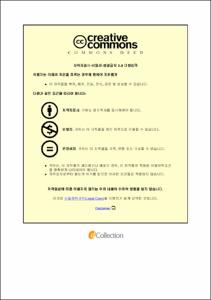Estimation of Productivity Growth, Technical Progress and Efficiency Changes of Fishing Vessels in Lake Kivu of Rwanda
- Alternative Title
- 르완다의 키부호수에 생선창고의 생산성장의 추정, 기술과정 그리고 효율성변화
- Abstract
- This research evaluates the technical efficiency estimated for 6 fishing vessels from 2001 to 2016 by using Data Envelopment Analysis (DEA). Input orientated continues variable return to scale (VRS) was used. Based on the input- and output-oriented CCR model, productive units DMU (1) was found to have the objective function value equal to one. This means that DMU (1) and (2), were efficient, but the other vessels were inefficient since TE < 1.Fishing vessels of between (2001 and 2016) were estimated by using DEA –solver, the basic BCC-1 Model. The BCC-1 Model continues variable returns to scale (VRS). The efficiency rate was evaluated through examining input-oriented (BCC Model).Based on this analysis, the mean technological efficiency of entire fishing vessels in Lake Kivu were inefficient.
The movement of technological efficiency caused the raise in productivity of Lake Kivu fisheries. On top of all, technological progress and scale efficiency took part as a vital function in the changes in efficiency of each fishery. To sustain productivity, it is better to improve good fisheries management policies by the government and efforts by the fishing industries that help productivity boost.
- Issued Date
- 2019
- Awarded Date
- 2019. 2
- Type
- Dissertation
- Publisher
- 부경대학교
- Affiliation
- 부경대학교 글로벌수산대학원
- Department
- 글로벌수산대학원 국제수산과학협동과정
- Advisor
- 신용민
- Table Of Contents
- 1. Introduction 1
1.1. Background 1
1.2. Location and description of fisheries of Lake Kivu 4
1.2.1. Study area 4
1.2.2. Production and main Fisheries 5
1.2.3. Gill Monofilament Fishery 6
1.2.4. Hooks fishery 7
1.2.5. Long line fishery 7
1.2.6. Gillnets fishery 7
1.2.7. Small seine fishery 8
1.2.8. Cast net fishery 8
1.2.9. Fishing Permits 8
1.2.10. Stock assessment and management 9
2. Material and methods 10
2.1. Data Envelopment Analysis (DEA) 10
2.1.1. Input –Oriented DEA Model 10
2.1.2. Productivity change 12
2.1.3. Technical efficiency 12
2.1.4. Constant Returns-to-scale. 13
2.1.5. Variable returns to scale (VRS) 13
2.1.6. Scale efficiency 14
2.2. Data 15
3 Results and discussion 19
3.1. Efficiency rate 19
3.1.1. Efficiency rate of Gill Monofilament fishing vessels 19
3.1.2. Efficiency rate of Hooks fishing vessels 20
3.1.3 Efficiency rate of Longline fishing vessels 21
3.1.4 Efficiency rate of Gillnets fishing vessels 22
3.1.5 Efficiency rate 23
3.1.6 Scale efficiency series 26
4 Conclusion and Implications 28
Acknowledgement 31
Reference 32
Appendices 35
- Degree
- Master
- Appears in Collections:
- 글로벌수산대학원 > 국제수산과학협동과정
- Files in This Item:
-
-
Download
 Estimation of Productivity Growth, Technical Progress and Efficiency Changes of Fishing Vessels in L.pdf
기타 데이터 / 730.56 kB / Adobe PDF
Estimation of Productivity Growth, Technical Progress and Efficiency Changes of Fishing Vessels in L.pdf
기타 데이터 / 730.56 kB / Adobe PDF
-
Items in Repository are protected by copyright, with all rights reserved, unless otherwise indicated.